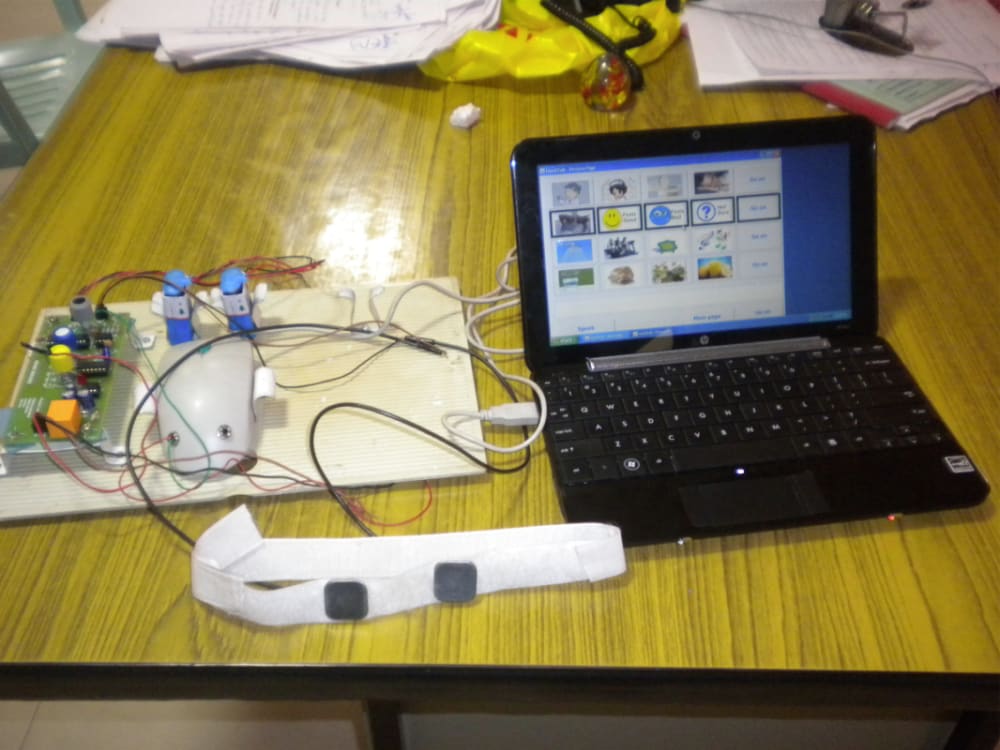Our client is an Amyotrophic Lateral Sclerosis (ALS) patient. Our client was diagnosed with this disease five years ago. It began from the fourth finger of her left hand and eventually started spreading to other parts. The muscle movement of such patients deteriorates continuously affecting the entire body. Hence, gradually the patient loses the ability to talk and move. The last preserved movement in these cases is the eyebrow movement. The idea is to design a medical product that can assist such patients to communicate with the outer word to meet their daily needs. Mind mouse is designed to facilitate the patient to communicate. The software is loaded on the netbook with which the patient can express their needs and call at the time of help.
Firstly, the capturing of Electromyograph (EMG) signal from the eyebrow is done. This signal is processed and converted into a binary format that resembles the clicking mechanism of the normal mouse. Many applications and the operating system of a tablet PC can be programmed to respond in different ways to different gesture created by EMG signal in terms of binary format. The modified mouse is then connected to a Tablet PC that has the click-to-sound converting software. Standardized patient needs and queries were implemented in our document software. The sound output has various options like “water”, “help”, “pain”, ”food”, ”sleep”, “medicine” and other daily needs. There is a direct connection between the action and result. It has a total of 15 icons. The software is easily configured on tablet PC to adapt to the needs of the user. The cursor moves automatically from one icon to the other with a gap of 100 msec. The quality and validity of data obtained using a tablet PC and the capability of disabled patients to handle it were evaluated by training the patient.
The surface EMG electrodes are placed on the eyebrow muscles. The movement of the muscles is captured by the electrodes and transmitted to the circuit. The signal is has minute amplitude (in µV) and is not in a usable form. It is amplified with 10,000 gains in first level and 20 in second level. The amplified signal is filtered using an 8th order low pass filter to attenuate the high frequency noise that comes from subcutaneous muscle movements. The pre-processed signal is converted into a binary format using a comparator and monostable multivibrator. This binary signal is sent as input to the modified mouse using a universal port. It runs parallel with the click mechanism of normal mouse. Thus, whenever the patient raises the eyebrow, the icon on which the cursor currently points is clicked. Sound items specific to a particular icon is there so depending upon the icon selected, the sound output comes out. The tablet PC application help the ALS patient for producing different sounds based on their daily basic needs and improves the quality of care by effective patient monitoring and contributes to patients’ empowerment.
Like this entry?
-
About the Entrant
- Name:Pragya Jaikumar
- Type of entry:teamTeam members:Ramya Bobba
Sujitha
Deepika
P.Subhashini - Hardware used for this entry:EMG sensors,Tablet PCSoftware used for this entry:Windows operating system
- Patent status:none





